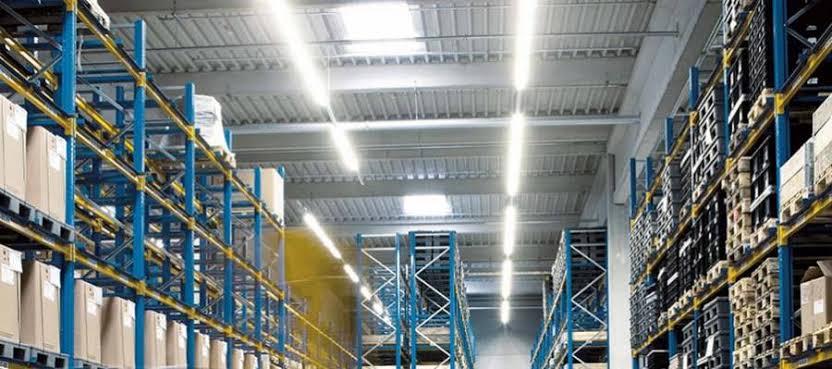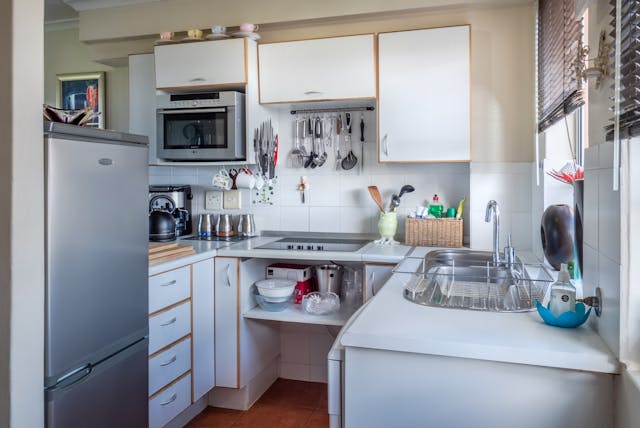Lighting plays a pivotal role in the functionality and safety of warehouse environments. Adequate lighting is essential not only for the visibility and comfort of workers but also for operational efficiency and safety. In warehouses, where activities range from inventory management to machinery operation, poor lighting can lead to increased errors, accidents, and overall reduced productivity. Therefore, choosing the right lighting solution is a key decision for warehouse managers and operators.
Types of LED Warehouse Lights
The selection of the right type of LED lighting is crucial for warehouse environments. Different types of LED lights offer unique benefits and are suited for various applications within a warehouse. Here are the primary types of LED warehouse lights:
1. UFO High Bay LED Lights
- Description: UFO High Bay lights are named for their distinctive, round shape that resembles a UFO. These lights are compact and powerful, designed to provide intense, focused lighting from high ceilings. They typically feature a robust design with efficient heat dissipation systems.
- Unique Features:
- Efficient Heat Dissipation: Their design often includes built-in heat sinks that keep the lights cool and extend their lifespan.
- Easy Installation: UFO lights are generally easier to install due to their all-in-one design, requiring fewer installation steps.
- High Lumen Output: They are known for high lumen output, making them suitable for brightly illuminating large areas.
- Best Use Cases: UFO High Bay lights are ideal for spaces with high ceilings (typically 20 feet or higher). They are well-suited for spot lighting in areas like loading docks, specific workstations, and storage areas where focused light is needed.
2. Linear High Bay LED Lights
- Description: Linear High Bay lights are elongated fixtures that provide a wide spread of light. They are designed to illuminate larger areas with more uniform light distribution.
- Advantages:
- Broad Coverage: Their elongated shape offers a more even distribution of light, covering a wider area than UFO lights.
- Versatile Installation: They can be mounted in various ways, including suspension and direct surface mounting, offering flexibility in different warehouse layouts.
- Reduced Glare: Many linear high bay lights are designed to minimize glare, which is beneficial in environments where workers are performing detailed tasks.
- Comparison with UFO High Bay Lights: Linear High Bay lights are more suitable for general lighting across the warehouse, especially in areas where uniform light distribution is needed. While UFO lights are excellent for targeted, intense lighting, linear lights are preferable for overall ambient lighting in spaces like assembly areas, packing zones, and larger open spaces.
3. LED Panel Lights
- Description: LED Panel lights are flat, rectangular lighting solutions that provide a sleek and modern look. They are often used in office spaces within warehouses.
- Advantages:
- Aesthetic Appeal: They offer a more aesthetically pleasing option compared to traditional lighting.
- Even Light Distribution: LED panels provide a soft, even light that is easy on the eyes, making them suitable for office tasks.
- Energy Efficient: Like other LED options, they are energy-efficient and have a long lifespan.
- Best Use Cases: Ideal for administrative areas, break rooms, and other office spaces within the warehouse.
4. LED Strip Lights
- Description: LED Strip lights are flexible, adhesive strips of light that can be used in a variety of applications.
- Advantages:
- Flexibility: They can be cut to size and are flexible, making them ideal for lighting irregular shapes or confined spaces.
- Accent Lighting: Often used for accent lighting, they can highlight architectural features or used under shelving for additional visibility.
- Best Use Cases: Useful for accent lighting, task lighting under cabinets, and in areas where traditional lighting fixtures are not feasible.
Each type of LED warehouse light serves a specific purpose and choosing the right one depends on the specific needs of the warehouse space, including ceiling height, the type of work being done, and the desired aesthetic. By selecting the appropriate LED lighting, warehouses can achieve optimal illumination, energy efficiency, and a better working environment.
Installation and Maintenance of LED Warehouse Lights
Proper installation and maintenance of LED warehouse lights are crucial for ensuring their optimal performance and longevity. Here’s a guide to help you navigate these processes effectively.
Installation of LED Warehouse Lights
- Planning the Layout:
- Assess the Space: Consider the warehouse’s dimensions, ceiling height, and areas that require specific lighting levels.
- Lighting Design: Create a lighting plan that ensures even distribution of light, avoiding dark spots and glare.
- Choosing the Right Fixtures:
- Select appropriate LED fixtures (UFO, Linear, Panel, or Strip Lights) based on the warehouse’s specific needs.
- Electrical Considerations:
- Ensure that the electrical infrastructure of the warehouse can support the new LED lighting system.
- Consider hiring a professional electrician to handle the electrical aspects of the installation.
- Mounting the Lights:
- For High Bay Lights: Use chains, pendants, or hooks for hanging, ensuring they are securely fastened to the ceiling.
- For Panel and Strip Lights: Follow manufacturer guidelines for surface or recessed mounting.
- Safety First:
- Always turn off the power before starting the installation.
- Use proper safety equipment, such as ladders, scaffolding, and protective gear.
- Testing:
- After installation, test each light fixture to ensure it is working correctly.
Maintenance of LED Warehouse Lights
- Regular Cleaning:
- Dust and debris can accumulate on light fixtures, reducing their efficiency. Clean the lights regularly with a soft, dry cloth.
- Ensure the power is off before cleaning.
- Inspect for Damage:
- Periodically inspect the lights for any signs of damage or wear, such as cracks or flickering.
- Timely Replacements:
- Although LEDs have a long lifespan, be prepared to replace them when they start to dim or fail.
- Check Electrical Connections:
- Regularly inspect electrical connections and wiring for signs of wear or damage.
- Monitor Performance:
- Keep an eye on the overall performance of the lighting system. Look for changes in light output or color, which can indicate issues.
- Professional Audits:
- Consider having a professional lighting audit periodically to ensure the system is functioning optimally and to identify potential upgrades or improvements.
- Firmware and Software Updates:
- For smart LED systems, ensure that the software or firmware is regularly updated for optimal performance.
- Environment Considerations:
- Ensure that the lighting environment (temperature, humidity) is within the specifications recommended by the manufacturer.
By following these installation and maintenance guidelines, you can ensure that your LED warehouse lights function efficiently and effectively over their lifespan, providing a safe, well-lit environment for warehouse operations.






